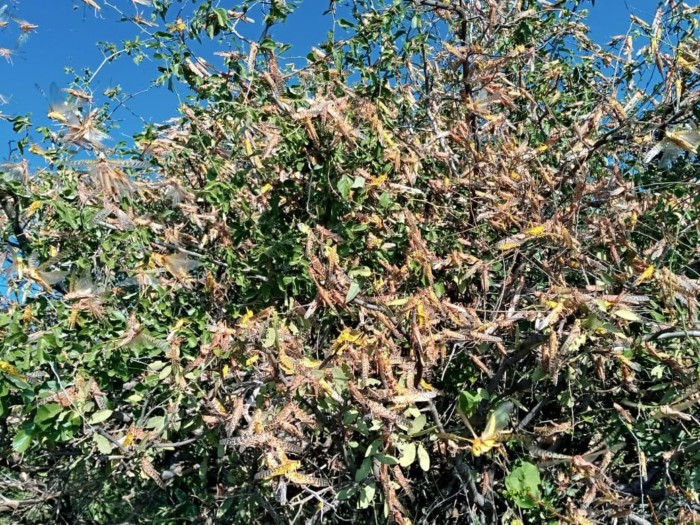
A swarm of locusts has been spotted in Samburu county just a day after swarms of desert locusts crossed over to Isiolo county.
According to the Samburu county assembly speaker Solomon Lempere, the swarm was spotted in Lolkanjau in Samburu east constituency.
Though officials from the county agricultural department are yet to state whether the locusts belong to the desert swarm group that has been ravaging parts of North eastern Kenya, the constituency borders Isiolo and Marsabit counties where the desert locusts have previously been spotted.
“ A swarm of locusts in Samburu east ,Lolkanjau across a stretch of 10 kilometers urgent intervention needed “ Lempere said on Friday.
On Thursday, the Meru county department of agriculture said that a swarm of insects that had been spotted in Igembe north a Miraa growing area was green hopper grasshoppers and not desert locust as previously feared.
On Friday, agriculture CS Mwangi Kiunjuri admitted that fighting the swarms of the destructive pests that have been ravaging the vegetation in parts of North eastern Kenya was an uphill task that was being worsened by insecurity in parts of the affected counties and in neighboring Somalia where the pests migrated from.
Kiujuri added that the regional body mandated with fighting the pests which is headquartered in Ethiopia was facing challenges to mobilize the required resources .
“ They are trans-boundary pests that must be fought through a regional strategy to ensure that their resting place is well sprayed” Kiunjuri said.
Kiunjuri said that the government would train officials from Isiolo Samburu, Meru Tharaka Nithi, Kitui, Garissa and Laikipia counties on how to respond to the locust crisis that is threatening food security in the affected counties.
Kiunjuri added that an additional aircraft would be deployed to help in the aerial spraying that kicked of on Monday.
The locusts crossed over to Africa from Yemen where they were first spotted in September 2019.
In November, the locusts crossed over to Ethiopia before crossing to Somalia in December with the Food and Agricultural Organization FAO warning that should they fail to be contained in Kenya, the locusts could cross over to Northern Uganda and parts of South Sudan.
“There is a risk that some swarms could appear in northeast Uganda, southeast South Sudan and southwest Ethiopia. Ground and aerial control operations continue in Ethiopia and aerial operations started in Kenya on 6 January. Insecurity and a lack of national capacity have so far not allowed control operations in Somalia. During January, swarms will mature and lay eggs in the Ogaden and north central Somalia that will hatch and cause numerous hopper bands to form. There is a low risk of breeding in Kenya.” The Food and Agricultural Organization said on Monday.












